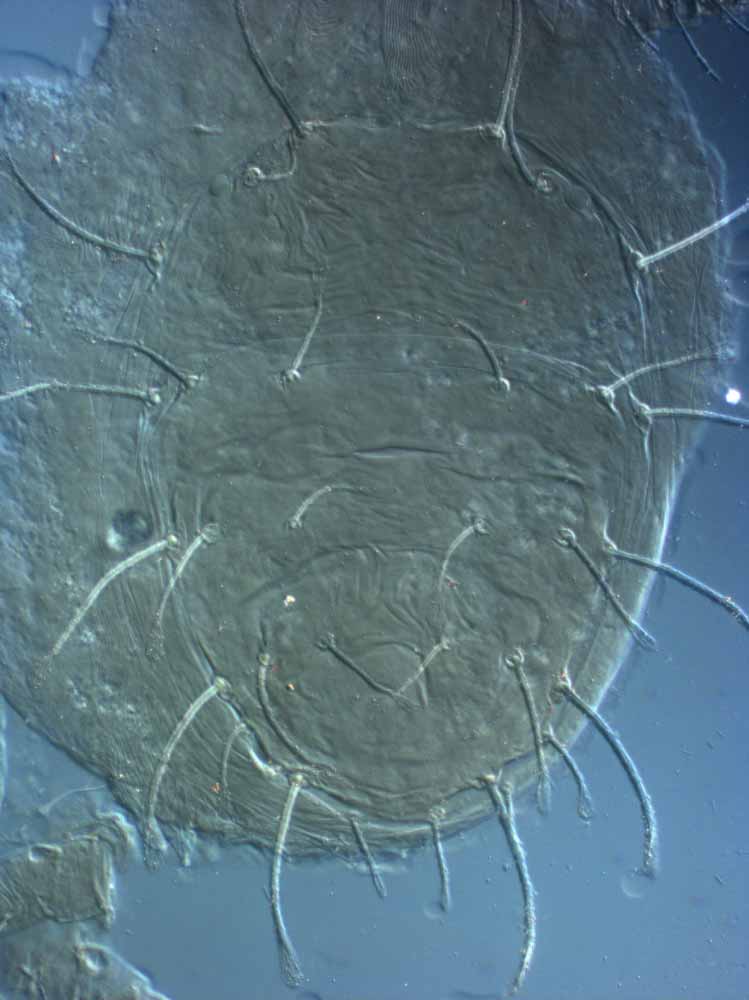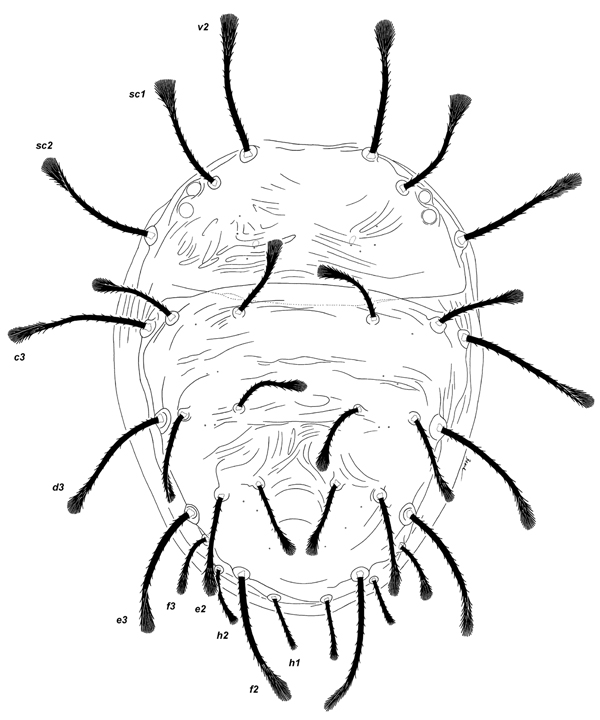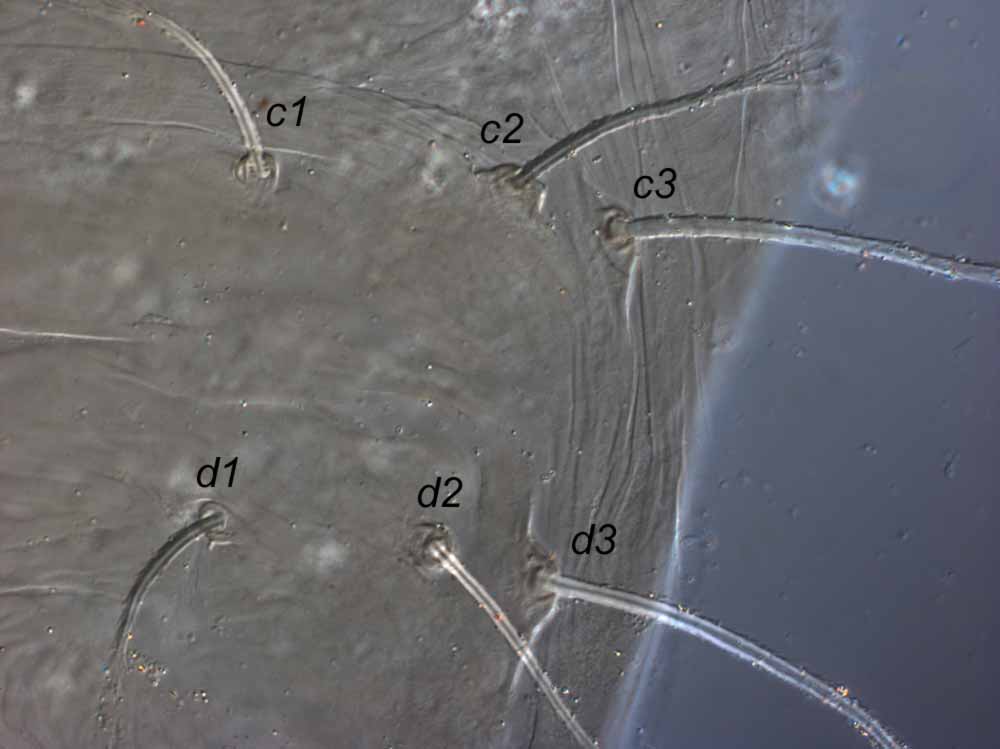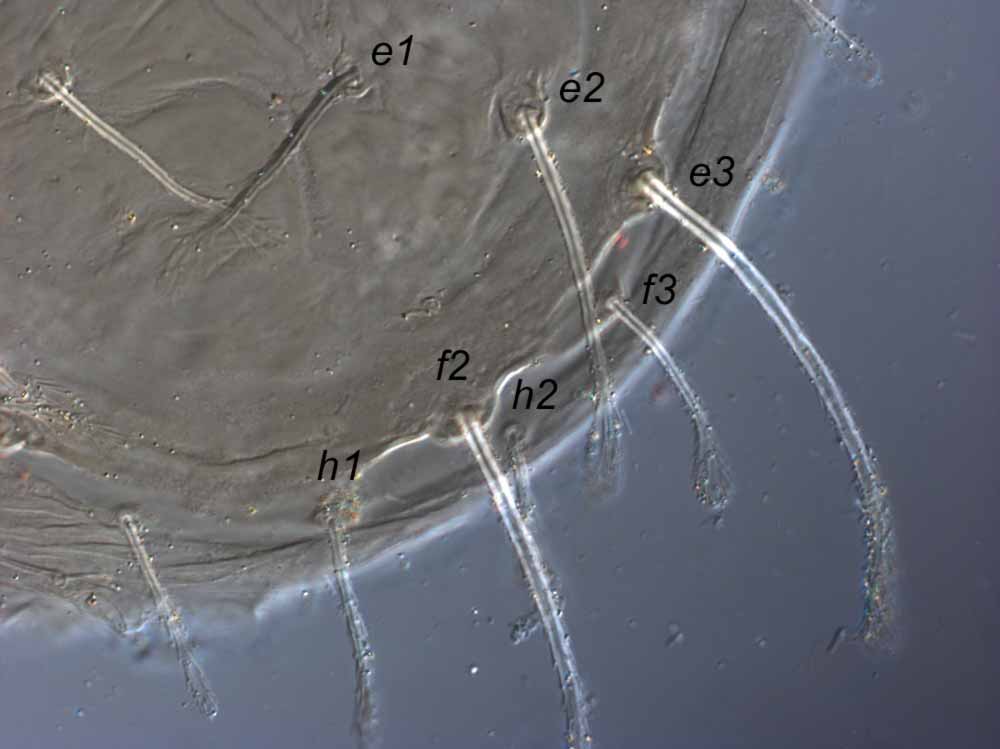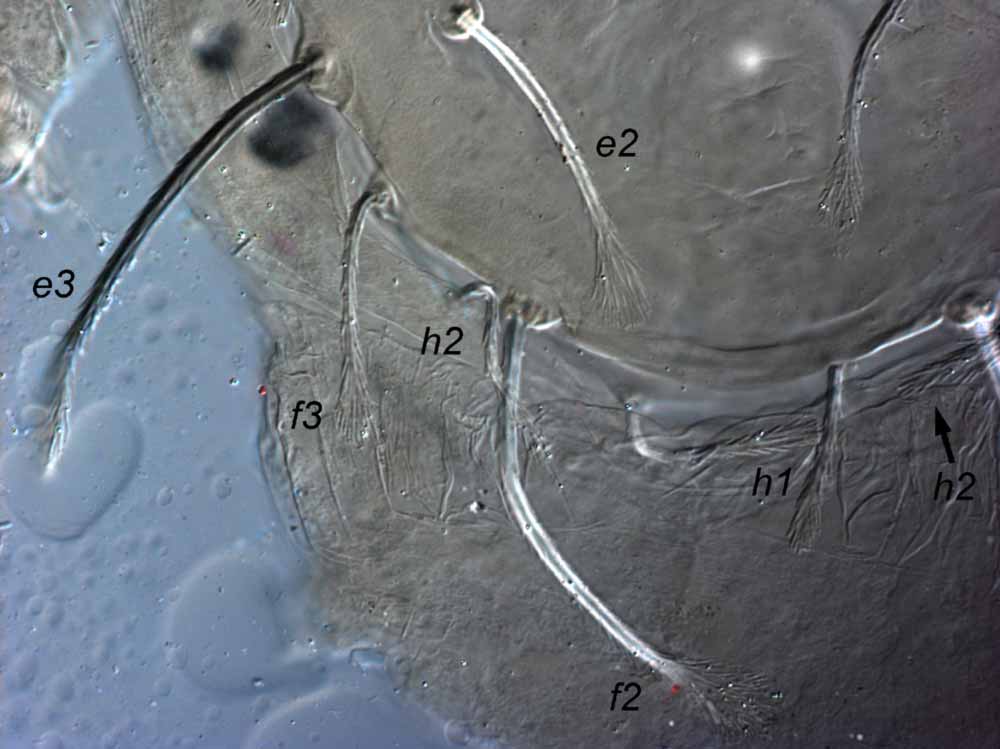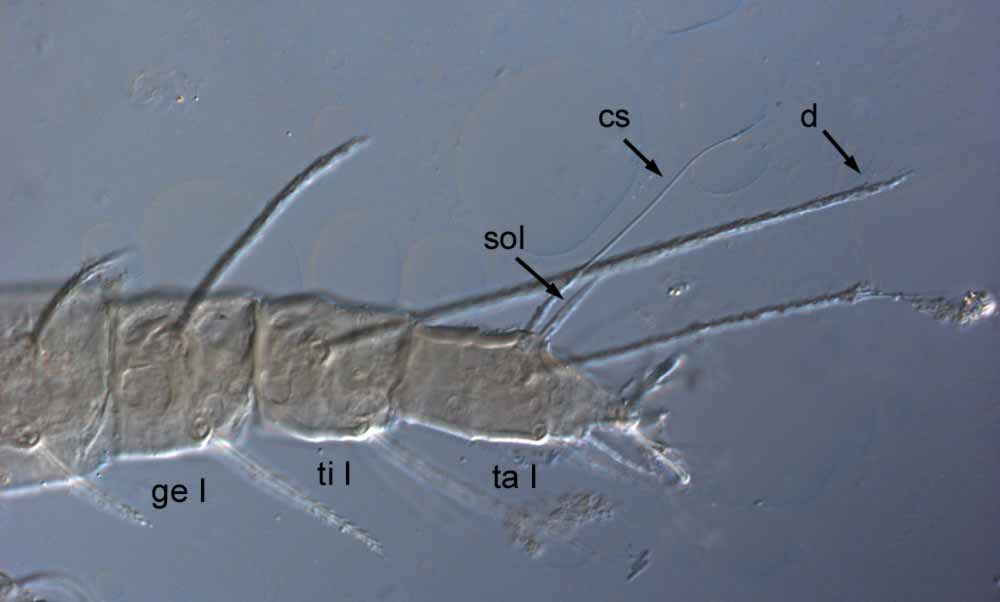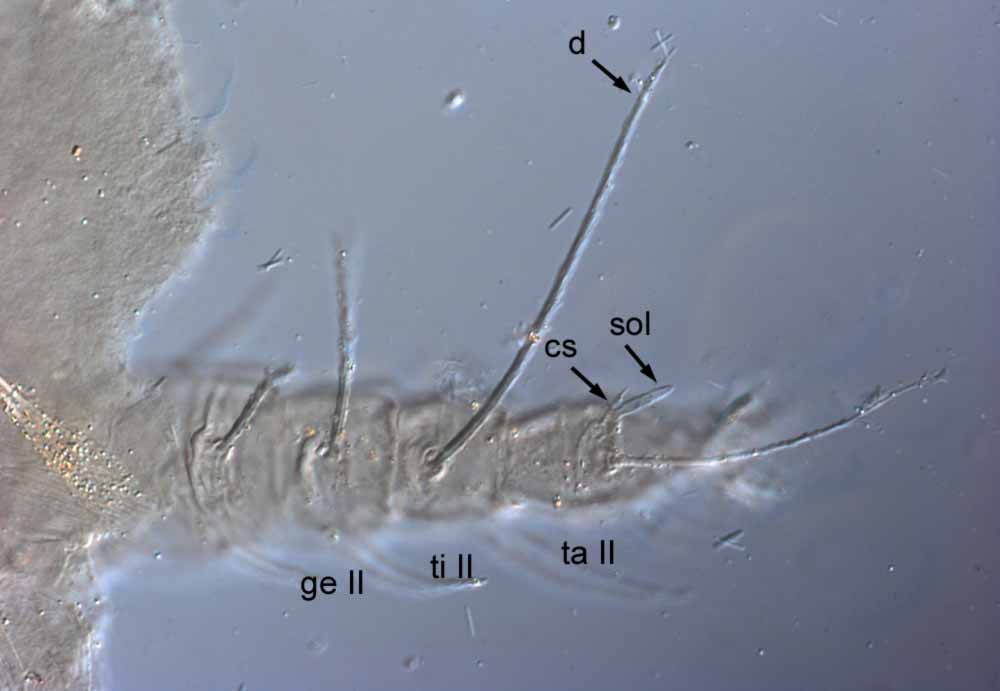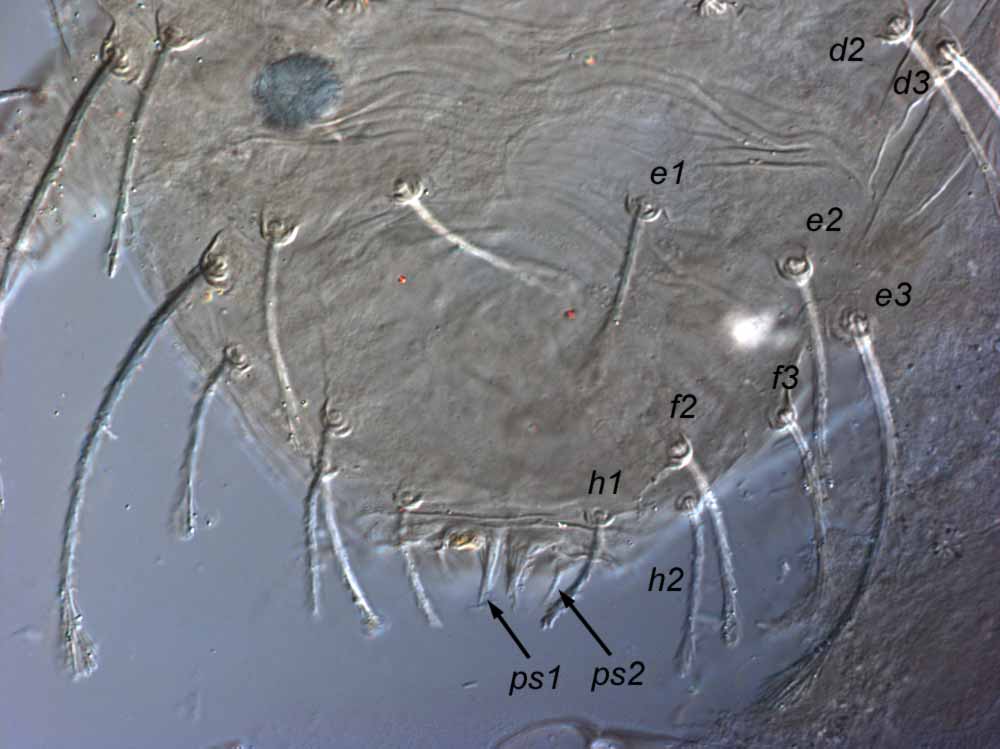Raoiella shimpana
|
Fig. 1. Raoiella shimpana female paratype dorsum. |
|
Fig. 2. Raoiella shimpana female paratype dorsum. |
|
Fig. 3. Raoiella shimpana female paratype anterior dorsolateral opisthosoma. |
|
Fig. 4. Raoiella shimpana female paratype posterior dorsum. |
|
Fig. 5. Raoiella shimpana female paratype posterior dorsum. |
|
Fig. 6. Raoiella shimpana female paratype leg I (sol = solenidion; cs = companion seta; d = dorsal seta on tibia; ge = genu; ti = tibia; ta = tarsus). |
|
Fig. 7. Raoiella shimpana female paratype leg II (sol = solenidion; cs = companion seta; d = dorsal seta on tibia; ge = genu; ti = tibia; ta = tarsus). |
|
Fig. 8. Raoiella shimpana female paratype palp (s = solenidion; e = eupathidium). |
|
Fig. 9. Raoiella shimpana male paratype posterior dorsum. |
Authority
Meyer
Key characters
- setae c1, d1, e1 spatulate (narrowly) (Figs. 1, 2, 3)
- seta h1 usually subequal in length to h2 (sometimes slightly longer) (Figs. 2, 4, 5)
- seta h2 spatulate to weakly spatulate (Fig. 2)
- seta f2 longer than f3 (Figs. 2, 4, 5)
- coxae III-IV with one seta each (3b, 4b)
- femur II with 4 setae (d, l', bv", v')
- genua I-II with 3 setae (d, l', l")
- tarsus I with companion seta obviously longer than solenidion (Fig. 6)
- tarsus II with companion seta obviously shorter than solenidion (sometimes subequal in length) (Fig. 7)
- dorsal setae on tibiae I-II setiform, with tapered tip (not finely tapered) (Figs. 6, 7)
- palp tibiotarsus with one solenidion and one tapered, setiform eupathidium distally (Fig. 8), and one seta dorsally
- setae ps1 and ps2 inserted adjacent to each other
- male with short ps1 setae, 11 microns (Fig. 9)
- male femur II and genua I-II same as female
- larva unknown
Similar species
Raoiella shimpana is similar morphologically to Raoiella argenta.
Raoiella shimpana: opisthosomal setae f2 76-81; setae d on femora I, tibiae I and setae l' on tibia I with broad blunt tips; palp eupathidium tapered, not forked distally.
Raoiella argenta: opisthosomal setae f2 62-68; setae d on femora I, tibiae I and setae l' on tibia I with tapered tips; palp eupathidium forked distally.
Distribution
South Africa
Hosts
Cassine transvaalensis (Celastraceae)
Remarks
This species was redescribed by Beard et al. (2018) and placed in the newly propsed macfarlanei species group.
References
Akbar (1990); Akbar & Chaudhri (1987); Beard et al. (2018); Chaudhri & Akbar (1985); *Meyer (1987); Mohanasundaram (1989)
* - original description

